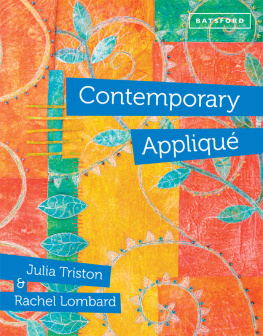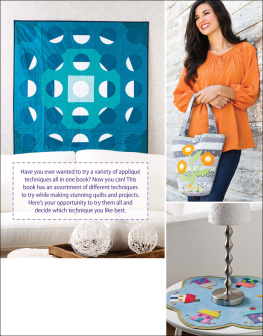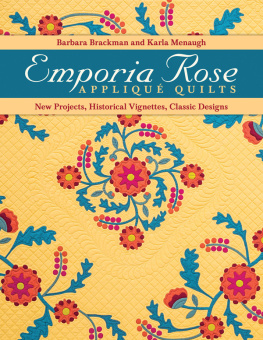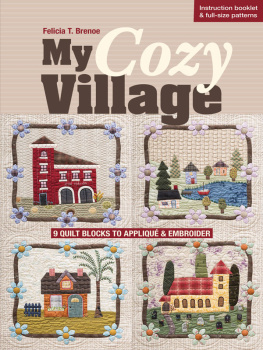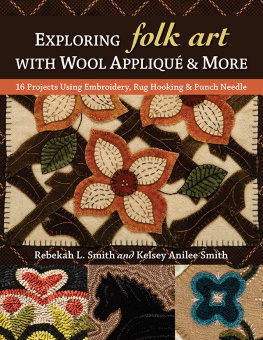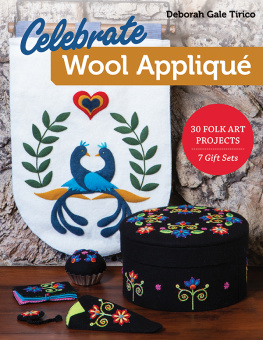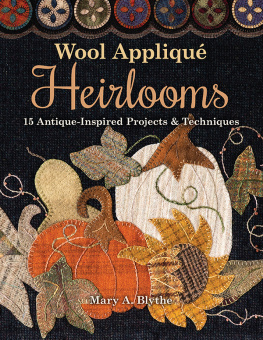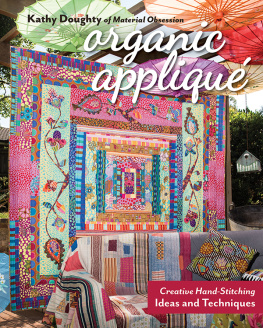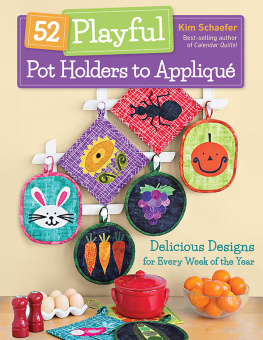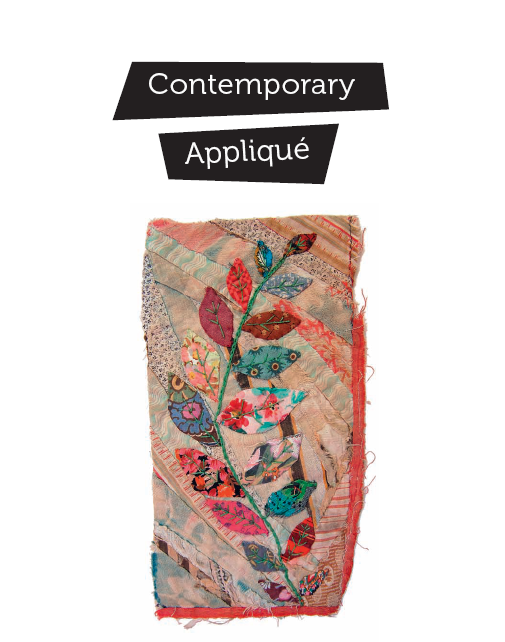
Sprig (Mandy Pattullo). Hand stitched appliqu on vintage quilt fragment.
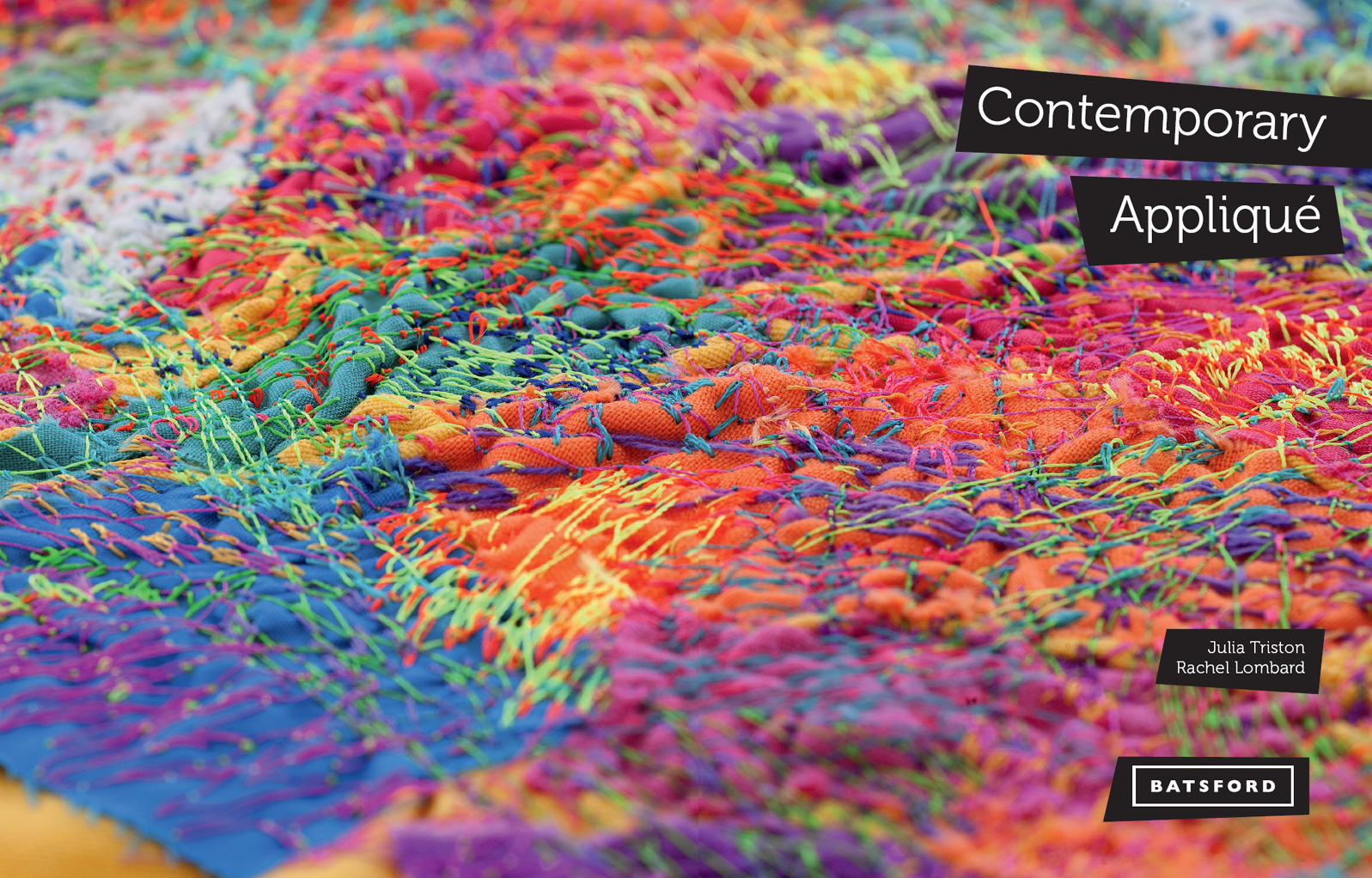
Bright Spot (detail) (Julia Triston). Constructed textured appliqud surface; cotton patches applied to cotton foundation with whip stitch in free machine embroidery.
Dedication
To Zo Triston and Tim Triston. Thanks for being such brilliant, inspiring and loving human beings; you are the best. And thanks to my mum, Joan Baker, for being there and for believing in me. To the memory of Natalie Jane Davies and Daisy Jane Few Dodds: two wonderfully creative women who knew how to lead their lives to the full.
Julia Triston
Dedicated to David, with love, weve been a long long time together, through the hard times and the good. To James, Christopher and Sin you are each unique and wonderful. Also to Elsie, the dog, our favourite furry friend.
Rachel Lombard
Contents
Foreword
This book is about appliqu the art of decorating one fabric with another. Appliqu is an umbrella term that encompasses a collection of techniques, such as layering, patching, applying and overlaying, which can be interpreted in myriad ways.
Each technical variation of appliqu has its own structure and formal method of working within set boundaries as well as the expectations of function and appearance. But these boundaries can be broken, developed and reinterpreted so that appliqu becomes contemporary and relevant for your own work and practice.
As well as setting appliqu within its historical and traditional contexts, we will take you on a journey of new ideas and imaginative ways to develop distinctive and individual designs; create exciting compositions; use unusual combinations of materials; and explore innovative and creative approaches for each method.
Enjoy discovering the exciting possibilities of appliqu!

Tea Time Treats (Donna Cheshire). From left to right: Rosie Lea, Garden Party, Its Always Sunny in the Tea Tent; collaged appliqud surfaces with free machine embroidery on recycled tins.

Flourish (detail) (Emily Notman). Bonded, stitched and burned appliqud surface with natural and handmade embellishments.
Introduction
The possibilities for the exploration of appliqu are endless. It can be explored two- and three-dimensionally; it can be delicate and transparent or thick and chunky; it can be on a large or more intimate scale; it can be created in fabrics, plastics, papers or metals; it can be used in layers and multiples to repeat patterns; it can play with shape and form; and it can be the main feature or a smaller component or highlight of a piece of work.
In its simplest form, appliqu is the technique of stitching a small patch of cloth on to the surface of a larger foundation cloth, and was traditionally used to repair small holes and tears in clothing and furnishings.
From these utilitarian beginnings, appliqu has evolved to become an expressive and creative art form in its own right. In contemporary appliqu, the emphasis is now on surface embellishment and decoration. Wide ranges of colours, textures and materials can be innovatively combined to create individual and personal textile artwork, from quilts and soft furnishings to clothing, jewellery and wall art.
In this book we will build on a foundation of traditional knowledge and skills, and show you that appliqu is very much alive. It is relevant to, and at the cutting edge of, contemporary surface decoration and textile design.
Part 1
Appliqu in context

Antique Hmong Tribe traditional costume fragment (detail), (collection of Julia Triston). Hand-appliqud cottons onto fabric strips with embroidered surface decoration.
Historical perspectives
Historically, textiles were highly prized and valued for their beauty as well as their function, as they were time-consuming and labour-intensive to produce. Because there were few alternative materials suitable for wrapping, carrying, sheltering, shrouding and clothing, textiles held a status and importance in everybodys lives; we have lost this respect for textiles today. In our modern throwaway world we take for granted the availability, variety and cost of textiles.
Appliqu has existed for thousands of years. Although textiles by their nature deteriorate and disintegrate over time and colours fade, beautiful examples of exquisitely designed and intricately worked appliqu have survived from all over the world. These give us a tantalizing insight into the historic use and importance of appliqu, and an appreciation of the technical skill and creativity of the people who used this method of decorating one cloth with another.
Ancient appliqu
Archaeological excavations reveal that richly decorated appliqud and embroidered textiles were closely associated with, and reflected the elite status of, the deceased. They were entombed with the revered dead to accompany them to the afterlife, giving us a fascinating insight into the everyday lives and lost worlds of ancient civilizations.
Some of the earliest surviving appliqus have been discovered in Ancient Egyptian tombs. Mummified animals have been found wrapped in appliqud cloths, and a linen collar with appliqud petals dating back 3,000 years was discovered in Tutankhamens tomb.
In southern Siberian tombs, examples of felt and leather appliqu, dating back to the fifth century BC, were discovered in the 1920s. These highly decorative and incredibly well-preserved appliqud carpets and wall hangings, saddle blankets and coverings were made by the early nomadic tribes of the Pazyryk region of the Altai Mountains. It is astonishing that these beautiful textiles really are 5,000 years old the colours, textures, designs and workmanship are so intact that they could have been made yesterday. It is only because of exceptional climatic conditions that these precious ancient textiles have survived.
Although much of the physical evidence of appliqu has been lost with the passage of time through deterioration, wear and tear, and recycling, there is such a consistency in the use of materials, designs and technique, it is obvious that the traditions of appliqu have been passed from generation to generation through the ages.
For centuries, textiles were a valuable trading commodity and, as they were traded between cultures, ideas about appliqu were exchanged, designs were reinterpreted and techniques were adapted to make them more suitable for use with locally available materials and cultural tastes.

Saddlecloth, 218 68cm (86 27in), 5th4th century BC (Pazyryk culture, Siberia, collection of The State Hermitage Museum, St Petersburg). The whole surface of this white felt saddlecloth, except for a narrow band beneath the saddle, is covered with ornamental inlay felt appliqu, with horseshoe shapes in the border.
Next page
